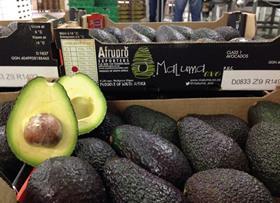
South African avocado growers face an off-year this year and export volumes are expected to drop from last year’s record of more than 20m cartons.
The crop is expected to be in excess of 15m cartons, which represents a significant drop compared with last year. However, this does not tell the full story of the growth that is playing itself out in the South African avocado business.
In the end, despite a drop of almost 25 per cent, the export volume is likely to be the second highest in the history of the industry. The 2019 performance, when the season is done and dusted, will therefore not reflect what is happening in the industry.
Derek Donkin of Subtrop confirms that growth in the industry is significant, but says avocado growers have learnt to live with on- and off-years.
“This year is definitely not an indication of growth prospects,' he says. 'Despite the expected 2019 drop, we are seeing continued plantings which will propell the industry forward in the years ahead.'
The first containers have already been shipped and Donkin says the first significant arrivals in the UK and Europe are expected by the middle of March. “Our volumes this year are expected to be 62 per cent Hass and 38 per cent greenskin varieties.”
Donkin notes that South Africa set a new benchmark last year for its export crop. “It came on the back of a recovery from drought and new plantings which extended the orchards. We continue to see growth in new varieties and this will position the industry for future growth.”
He says Gem is increasingly making a difference amongst club varieties, while Maluma, a truly South African Hass variety with reportedly unique characteristics, is also showing increasing promise.
Last year’s crop broke through the 20m-carton barrier for the first time in the industry's history. This year, high temperatures during fruit set somewhat contributed to the forecast and the expected drop in exports cannot therefore be solely attributed to an off-year.
“We will have plenty of avocados to supply all our programmes,” Donkin confirms.
What is significant is that the on-year volumes in future should settle above 20m cartons, particularly because plantings are expected to increase at a rate of around 1,500ha per year for the next few years.
The South African export season is expected to continue until the end of October, with more late producing regions coming on stream.



